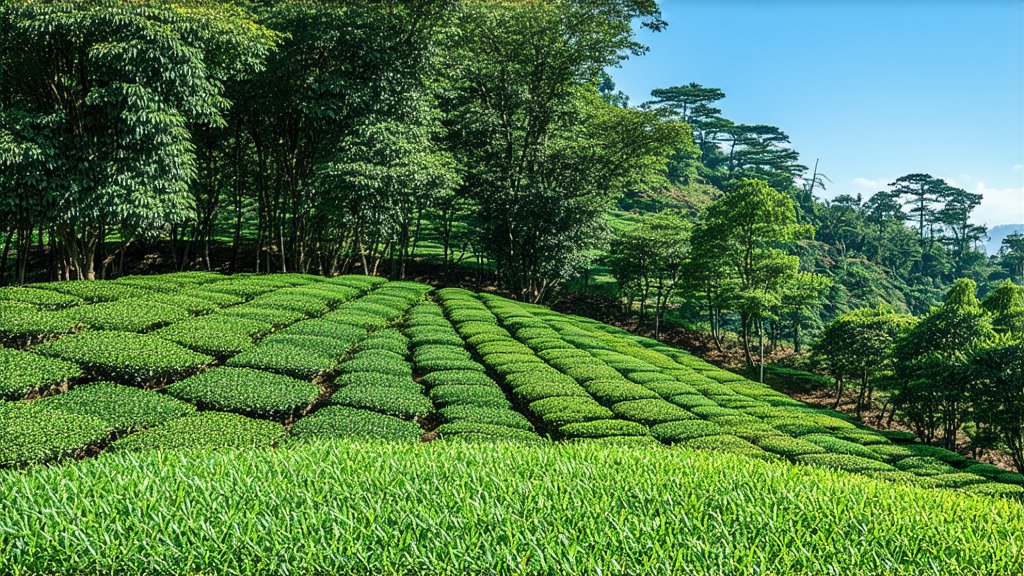
In the vast tapestry of Chinese tea culture, few varieties hold as storied and revered a place as Keemun black tea. This exquisite beverage, originating from the picturesque mountains of Anhui Province, has captivated tea connoisseurs around the globe for centuries. Its rich history, intricate production process, and unique flavor profile make it a subject of fascination for both novice and seasoned tea enthusiasts alike.
A Glimpse into History
The story of Keemun black tea dates back to the early Tang Dynasty (618-907 AD), but its prominence surged during the Qing Dynasty (1644-1912). Named after the town of Qimen County in Anhui Province, Keemun was initially known as "Qimen Hong Cha" or "Keemun Red Tea." It gained international fame when it became one of the first Chinese teas exported to Britain in the 19th century, where it quickly earned a reputation as one of the finest black teas available. Its popularity spread rapidly across Europe, making it a staple in many households and an integral part of afternoon tea traditions.
Varieties of Keemun Black Tea
Keemun black tea encompasses several distinct grades and blends, each offering a unique sensory experience. Among the most celebrated are:
-
Keemun Mao Feng: Often referred to as the "Feather Tips," this premium grade features young leaves and buds that are meticulously handpicked. Its appearance is characterized by slender, twisted leaves with golden tips, reminiscent of delicate feathers.
-
Gongfu Dancong: Known for its robust flavor and full-bodied texture, Gongfu Dancong is made from older leaves and stems. It offers a more intense and earthy taste compared to other Keemun varieties.
-
Xu Yue Hao Ya: Translated as "Premium Quality Tea," this variety strikes a balance between delicacy and strength. It is crafted from carefully selected leaves, ensuring a harmonious blend of sweetness and complexity.
Crafting the Perfect Brew: The Making of Keemun Black Tea
The creation of Keemun black tea is a testament to the artistry and precision of traditional Chinese tea-making techniques. Here's an overview of the intricate process:
-
Withering: Freshly harvested tea leaves are spread out in thin layers on bamboo mats to wither under the sun or in well-ventilated rooms. This step reduces moisture content and initiates enzymatic reactions that contribute to the tea's aroma and flavor.
-
Rolling: Withered leaves undergo rolling to break down cell walls, releasing essential oils and enzymes. This process also shapes the leaves into their characteristic twisted form.
-
Oxidation: The rolled leaves are allowed to oxidize, a crucial step where polyphenols react with oxygen, transforming the green leaves into dark brown or black. This stage determines the tea's color, flavor, and aroma.
-
Drying: Finally, the oxidized leaves are dried using hot air or pan-frying to halt oxidation and reduce moisture content to about 3-5%. This ensures the tea's stability and longevity.
-
Sorting and Grading: After drying, the tea is sorted based on leaf size and quality. Premium grades like Keemun Mao Feng are meticulously hand-sorted to ensure only the finest leaves and buds are included.
Savoring the Essence: How to Appreciate Keemun Black Tea
To truly appreciate Keemun black tea, one must engage all senses in the tasting process. Here's a guide to enhance your tea-drinking experience:
-
Warming the Teapot: Begin by rinsing your teapot and cups with hot water to warm them up. This helps maintain the optimal temperature for brewing and enhances the aroma.
-
Measuring: Use approximately 3 grams of loose leaf tea per 200ml of water. Adjust according to personal preference for stronger or milder flavors.
-
Water Temperature: Boil water to around 90-95°C (194-203°F). Avoid using boiling water as it can scorch the delicate leaves.
-
Steeping Time: For the first infusion, pour hot water over the tea leaves and let it steep for about 3-5 minutes. Subsequent infusions can be longer, as Keemun black tea is known for its ability to withstand multiple steepings without losing flavor.
-
Observing: As the tea steeps, observe the unfurling of leaves and the transformation of color from clear to a deep amber hue.
-
Smelling: Before taking your first sip, inhale deeply to capture the complex bouquet of floral, fruity, and woody notes that characterize Keemun black tea.
-
Tasting: Take small sips, allowing the tea to coat your palate fully. Notice the initial sweetness followed by a subtle astringency and a lingering aftertaste that hints at honey and dried fruits.
-
Re-steeping: Enjoy multiple infusions, each revealing new layers of flavor and aroma. Keemun black tea is renowned for its longevity and ability to maintain its character even after several steepings.
Conclusion
Keemun black tea stands as a timeless symbol of China's rich tea heritage. Its journey from the misty mountains of Anhui Province to tea cups worldwide is a testament to its enduring appeal and versatility. Whether enjoyed as a moment of quiet reflection or shared among friends during an afternoon gathering, Keemun black tea invites us to slow down, savor life's simple pleasures. As you embark on your own exploration of this remarkable tea, remember that each cup holds within it not just a beverage but a story—one that connects us to centuries of tradition, craftsmanship, and the art of living well.